
Yamadera's Risshaku-ji Temple
By Train to Yamadera, Visiting Risshaku-ji Temple
The Risshaku-ji Buddhist temple complex
at Yamadera has been a pilgrimage destination
since it was founded in the mid-9th century CE.
Yamagata means "mountain shape" or "mountain district",
it's the name of the prefecture and its capital city,
where I was staying.
Yamadera means "mountain temple".
It's a short trip by local train to Yamadera Station.
The main temple is just across the river from the station.
Local Train to Yamadera Station on the Senzan Line
It was a short walk of six blocks down a main street from my hotel to Yamagata Station. This is Japan, so the station is clean and efficient with many trains throughout the day.
The green-striped Senzan Line trains run between Yamagata and Sendai on the Pacific coast. Yamagata is in a broad flat basin surrounded by mountains. The Senzan Line branches off a short distance north of Yamagata Station to run through the mountains to the coast, stopping at Yamadera a short distance into the mountains.

The above view is to the north, the direction in which the train will start before curving to the right and into the mountains.
These taller mountains to the northwest of Yamagata are along the central spine of Honshū. In mid-May they still had snow at higher elevations.

Of course the train station has bookshelves and seating for school kids to sit and read while waiting for their train to school. By the time I got here in mid-morning they had neatly replaced all the books and left for school.
An unsupervised children's reading area. Wow, how nice!
I'm from the U.S., so I expect train stations to have armed guards, homeless men, and constant booming Fear Announcements.

Yamagata and Yamadera were along the border of an area within the rail network where you couldn't use the Pasmo and Suica contactless smart cards. Rather than worry about whether both ends of a trip were within the Pasmo/Suica realm, I simply bought tickets to travel around this area. With either paper or electronic payment, it was just ¥ 240 each way between Yamagata and Yamadera.
You feed the ticket into the barrier and pull it out at the beginning of the trip. At the end, the barrier will retain the ticket and open if you had paid enough. If not, it returns the ticket and tells you how much you owe, and you pay the additional amount at a machine or at a Fare Adjustment window at a staffed station.

It's a 17 to 19 minute ride, and a train runs every 40 minutes. The Senzan Line train is waiting on the left, the sign says in English that it goes through Yamadera and Ayashi to Sendai, plus there are several other stops along the way.

It's 4.8 km from Yamagata Station north to Uzen-Chitose on the Ōu Main Line. The Senzan Line branches off there to the east. Then it's just 9.3 km along the Senzan Line from there to Yamadera.
Google Maps dynamically generates the map when you load the page. There is a train every 40 minutes in each direction between Yamagata and Yamadera throughout the day. But if you are looking at this page when it's between midnight and 5 AM in Japan, you may see a bus route instead, possibly a very roundabout three-bus connection that would take over two hours.
Unlike the U.S., in Japan you reach the edge of the city and all at once you're in farmland. There is no belt of suburbia with vast tracts of rapidly constructed homes and enormous parking lots around shopping and fast food areas. In Japan you're in the city and then suddenly you aren't.


The farming is precise, using all the land up to the edge. The small steps between field sections allow the fields to watered by an irrigation system.

Arrival at Yamadera Station
We soon arrived at Yamadera Station. There's a central platform with a track on each side, making this one of the few stations on this line where two trains running in opposite directions can pass. Here's the view from the platform, across the east-bound track and town to the steep slope with the temples.

Turning toward the left and back toward Yamagata, you can look to the west out of these lower mountains and across the broad valley to the snow-covered central mountain range.

Turning to the right, you see the rail line continuing into the mountains toward Sendai.

You go downstairs, under the eastbound track, and out through the station. It's minimally staffed. For the most part it's all self-service. You are expected to figure out the schedule, buy your own ticket from a machine, and feed it into the barrier. Like a grown-up. Or a Japanese child going to elementary school by yourself.
You see the Risshaku-ji temple complex as you step out of the station. The primary temple is near the base of the bluffs. The famous of 1,015 stone steps leads up to several temples and monuments.

Hoju Bridge is a bright vermilion, an orange-red color traditionally used in Japan for bridges, Shintō shrine torii, Buddhist gates and temples, and other architectural details. Vermilion is traditionally made with cinnabar, α-HgS or mercury(II) sulfide. It's named from the ancient Greek κιννάβαρι, but it had been used as a pigment for a long time before ancient Greek came along. Cinnabar was used as a pigment before 7000 BCE at Çatalhöyük in today's Turkey.

Once across the bridge and into town, I got an ice cream cone. I chose the roasted sesame seed flavor. Roasted sesame soft-serve sometimes looks like concrete, like this one, but sometimes it's closer to black.


A flight of steps leads up from the main street to Risshaku-ji.
Risshaku-ji
The monk Saichō, posthumously known as Dengyō Daishi, had founded the Enryaku-ji temple in 788 CE on Mount Heii, near Heian-kyō, today's Kyōto. In 794 Emperor Kammu moved his court from Nara to Heian-kyō. In 806 Saichō established the Tendai school of Buddhism. The following year, with the support of Emperor Kanmu, he ordained one hundred disciples. The Tendai school's influence continued to grow.
The main hall of a Buddhist temple is generally called the hondō. The Tendai school uses the term konpon-chūdō.
This is the main temple of the entire complex which extends up the mountain. As the konpon-chūdō or hondō it enshrines the main objects of veneration. Here, those are a statue of the Medicine Buddha and an eternal flame.

The temple's tradition says that it was founded in 860 CE by the priest Ennin, now better known by his posthumous name, Jikaku Daishi. Analysis of its oldest wooden statuary supports that dating.
Jikaku Daishi had gone to China in 838 to study Buddhism. He studied at several temples and learned various esoteric Buddhist practices and Pure Land teachings. He was ordained into the Mahāvairocana Sūtra and Vajraśekhara Sūtra mandala rituals, and was initiated and trained in the Susiddhikara Sūtra tantra.
The anti-Buddhist Emperor Wuzon of Tang came to power in China, and Jikaku Daishi was deported. He returned to Japan in 847 CE and became chief priest of the Tendai sect of Buddhism at the Enryaku-ji temple. His study in China and his position at the temple near the Emperor's court made him one of Japan's most important Buddhist priests.
Emishi ancestry paper in Science Advances Overview in Phys.orgEmperor Seiwa, who ruled from 858 through 876, sent Jikaku Daishi north to establish a temple here in this mountain valley. At that time, this part of Tōhoku was the northern frontier of Japan as far as the Emperor and the Yamato people, the "mainstream Japanese", were concerned. From here north through the rest of Honshū, the largest island, the territory was occupied by the Emishi people, also called Ebisu and Ezu. Further north, the island of Hokkaido was Ainu territory.
Visiting Jōmon period settlements
Sannai-Maruyama Site
3900–2200 BCE
Ōfune Site
3500–2000 BCE
Kakinoshima Site
7000–1000 BCE
The Emishi and Ainu are thought to be descendants of the Jōmon people, a hunter-gatherer culture that first entered the Japanese archipelago from the north. They reached Hokkaidō around 25,000 years ago, and Honshū around 20,000 years ago. That was during the Last Glacial Maximum, when sea level was much lower. The mainland of Asia and the main islands of Japan were all connected by land. The Ainu language is a language isolate with no relationship to any known language family. It doesn't suggest where the people came from. We know they came from eastern Asia, and approximately when, but that's about all we know. One of the Ainu Yukar Upopo or legends tells that "[t]he Ainu lived in this place a hundred thousand years before the Children of the Sun came."
The Jōmon culture, with some of the world's earliest pottery, started at least 16,000 years ago. They very likely practiced a form of animism, possibly with some shamanism, forming a religion that eventually became primeval Shintō.
The main character in Princess Mononoke is a member of a last tribe of Emishi surviving into the 16th century CE.
During the first millennium BCE, the Yayoi culture brought the early Japonic language family and rice farming from the Korean peninsula to Kyūshū, the southwestern-most main island of Japan. That culture expanded to the east and north, leading eventually to the early Emperors based in Nara and later moving to Kyōto. It was only in the 14th century CE that the Japanese and Ainu people really came into contact.
Returning from prehistory, Japan's first supposed history books were written in the early 700s CE. Kojiki (or Records of Ancient Matters), written down in 711–712 CE, was quickly followed by the Nihon Shoki (or Chronicles of Japan), written down around 720 CE. These are referred to as "histories", although they're really compilations of legends. How the Emperor is the great-grandson of the grandson of Amaterasu, the Goddess of the Sun, and so on. Jikaku Daishi came here and founded Risshaku-ji only about 140 years after those mythic chronicles were written.
Temples are fire risks. They're wooden structures, often with thatched straw roofs, lit by candles and lamps. This temple also housed an eternal flame, increasing the danger. The temple burned down and was rebuilt in 1356 and again in 1554. Well, Buddhism recognizes the concept of saṃsāra, a continuing cycle of rebirth. A temple rebuilt multiple times in the same place to the same design may be considered as the original.
Speaking of fire, a large bronze incense burner stands in the approach to the temple. You use your hands to wave the smoke over your body and head. Cleansed by the smoke, you're ready to enter.

The honson or enshrined main image inside the hall is a wooden statue of Yakushi Nyorai said to have been carved by Jikaku Daishi when he established the temple. Yakushi Nyorai is the Japanese name for Bhaiṣajyaguru, formally Bhaiṣajya-guru-vaiḍūrya-prabhā-rāja, the Buddha of medicine and healing in Mahāyāna Buddhism.
There's also the carefully tended lamp with the purportedly eternal flame. The flame is said to have been brought from the Tendai home temple of Enryaku-ji when this temple was founded, and kept burning ever since. As already mentioned, this temple has gone through at least two catastrophic fires.
Of course this reminded me of the scene in The Loved One, in which a mortuary worker is selling the protagonist funeral and burial services for his uncle.
| — | I can give you our Eternal Flame in either Perpetual Eternal or Standard Eternal. |
| — | What is the difference, actually? |
| — | Well, with Standard Eternal, your flame burns only during visiting hours. It is shut down at night. With your Perpetual Eternal, your flame is in service 24 hours a day. |
| — | Well, I think the Perpetual Eternal, wouldn't you? |
| — | Propane or butane, Mr Barlow? |
| — | What? |
| — | Propane burns bluer. |

Recall that Emperor Seiwa had sent Ennin, aka Jikaku Daishi, to found this temple in 860. Later Emperors were exclusively Shintō and even anti-Buddhist, which is understandable since Shintō says they're directly descended from the gods. Seiwa, however, supported Buddhism and eventually abdicated to become a Buddhist priest.
Yoshifusa was the first Regent from the Fujiwara clan, establishing a hold on Imperial influence until the Meiji Restoration of 1868. The Fujiwara clan claimed descent from the Nakatomi clan and, through them, descent from the gods. Both clans said they were descended from the god Ame-no-Koyane who lives in Takamagahara, the abode of the heavenly gods connected to Earth by the bridge Ame-no-ukihashi. He's the son of the creator deity Kamimusubi, one of the first three gods to come into existence.
Seiwa was born in May 850. His father, Emperor Montoku, died in October 858. Seiwa took the throne as the 56th Emperor two months later, aged eight. His maternal grandfather, Fujiwara no Yoshifusa, held actual power as Sesshō or Regent until Seiwa came of age.
Seiwa's son Yōzei was born in 869, and proclaimed as Seiwa's heir the following year.
With succession set up, Seiwa abdicated the throne in 876, and his seven-year-old son Yōzei ascended to the throne. Yōzei's mother became Empress Fujiwara no Takaiko, and her brother Fujiwara no Mototsune continued the purportedly god-descended Tujiwara clan's hold on Imperial influence.
Meanwhile, Seiwa became a Buddhist priest in 878 and took the name Soshin. He died just three years later, at the age of 30.

There is what appears to be a Buddhist grave marker for Seiwa close to this temple. However, the Imperial Household Agency says that he is buried, and his kami or spirit enshrined and venerated, at a memorial shrine in the Ukyō-ku ward of Kyōto. I'm with Buddhists thinking that this is a grave marker or at least a memorial for the Emperor-turned-priest, and not a memorial to a spirit confined within a god-box.
A Buddhist grave is often marked with a gorintō, a Five-Ringed Tower, a stone form of pagoda.
The segments of a gorintō represent the five elements of Buddhist cosmology. They are thought to form the body of the cosmic Buddha Mahāvairocana, our human bodies, and the physical world. The five elements plus wisdom make up the universe. They are typically marked with the Siddhaṃ script developed in the 6th century CE to write Sanskrit. From top to bottom they are:
| Shape | Represents | Siddhaṃ | Japanese |
| Jewel-shape | Ether | 𑖏 / kha | kuurin |
| Hemisphere | Air | 𑖮 / ha | fuurin |
| Pyramid | Fire | 𑖣 / fa | karin |
| Sphere | Water | 𑖪 / va | suirin |
| Cube | Earth | 𑖀 / a | chirin |
The top two, the hemisphere representing Air and the jewel-shape representing Ether or Space, are usually merged. Sometimes aren't clearly distinguished from the top of the pyramid representing Fire.
Here is Emperor Seiwa's memorial gorintō. You can clearly see the Earth cube at bottom with the Water sphere on it. Then the Fire pyramid, Air hemisphere, and Ether jewel are merged into what looks almost like a hat on top. Above that is a sōrin, a spire or finial with nine rings or kurin.

Seiwa's son Yōzei was a psychopath who was enthroned as Emperor at the age of 8. He started by organizing fights between monkeys and dogs. Then he got himself involved in the executions of criminals. He murdered one of his retainers. Mototsune the Regent came to the court one day to discover that the Emperor had ordered some men to climb high into trees, and ordered other men to jab them with lances until they fell to their death.
Killing people or animals was one of the worst acts of spiritual pollution. The Imperial court and the nobility agreed that Yōzei had to go. The Regent talked up a plan for a horse race. Emperor Yōzei left the palace in his carriage to go to this supposed event, and then a heavily armed guard group redirected the carriage to a nearby town. There, the Regent explained that he had to abdicate to his father's uncle, who became Emperor Kōkō.
Unfortunately, they let Yōzei come back.
Five years later, he was still
hanging around the Imperial court,
garroting women with the strings of musical instruments
and throwing their bodies into a lake,
disappearing into the forest to chase the Sika deer
which Shintō considers messengers of the gods,
and otherwise being an unholy terror.
They must have found some way to deal with him,
because Yōzei lived for another sixty years
before dying at the age of 80.
People had brought hundreds of small figures of Jizō complete with red caps and bibs. He's a bodhisattva typically depicted as a monk, and is regarded as the guardian of children and the patron deity of deceased children and aborted fetuses. Jizō in Japanese, Kṣitigarbha in the original Sanskrit.

Matsuo Bashō was the most famous poet of the Edo period, when the Tokugawa shōgunate ruled Japan from 1603 to 1867. The Edo period saw a surge in the popular enjoyment of arts and culture such as wood block prints and poetry. Eventually, Hokusai, Hiroshige, and other artists created prints of Bashō being inspired to write a haiku.

Portrait of Matsuo Bashō by Hokusai (1760–1849).

Bashō's Hermitage and Camellia Hill on the Kanda Aqueduct at Sekiguchi, from the series One Hundred Famous Views of Edo by Utagawa Hiroshige, 1857.
Bashō was born in 1644 into a samurai family, and he was trained as a ninja. He became a servant to a nobleman and doesn't seem to have become a full samurai, but the position got him into poetry.
His employer died in 1666, and Bashō set about making himself a full-time poet. He moved to Edo, today's Tōkyō, in 1672 and became popular. Before long he had a full-time teaching job.
His hut burned down, his mother died, and he stayed with a friend for a while. Then Bashō started a series of wandering trips along the Edo Five Routes, the five major roads connecting the capital at Edo to the outer provinces.
That was widely regarded as a terrible idea, nearly suicidal. The Edo Five Routes were thought to be extremely dangerous. He would be killed by bandits or simply die of exposure in no time.
Actually, Bashō thrived on the road. He eventually became equally famous for his travel writing.
In 1689 Bashō visited Yamadera. He famously composed a haiku about the sound of the cicadas and the stone cliff faces. Something like:
and the cicada's voice
permeate the rocks
A monument near the main temple commemorates Bashō's visit and his haiku. He described the trip and his visit to Yamadera in his Narrow Road to the Deep North book.

who wanted a limerick haiku.
But
Stands sell snacks, charms, amulets, and the ema, wooden plaques on which you can write a prayer or wish and leave it hanging at the shrine.




Just beyond the Hie Shrine you reach a bell tower. A path branches off here leading to the famous 1,015 stone steps climbing up the mountain to the rest of the temple complex.
Other topics in Japan:
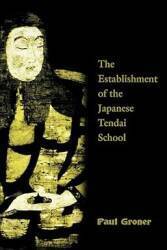
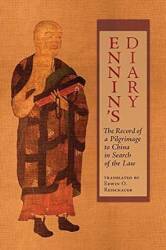
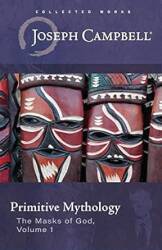
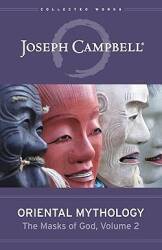
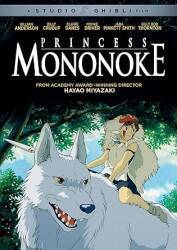
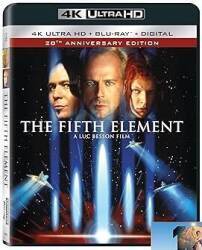
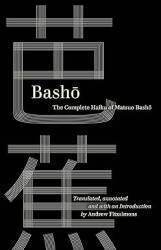
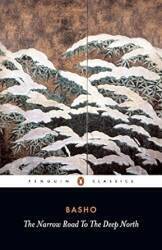





































Vermilion can be rendered as
#e34234in hexadecimal. Or, as more of a red-orange as#ff4500. or#ff5349. The last of those is closer to what you see on bridges and shrines and gates.